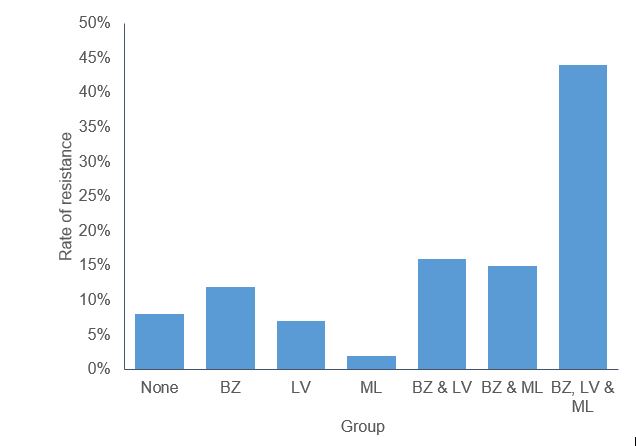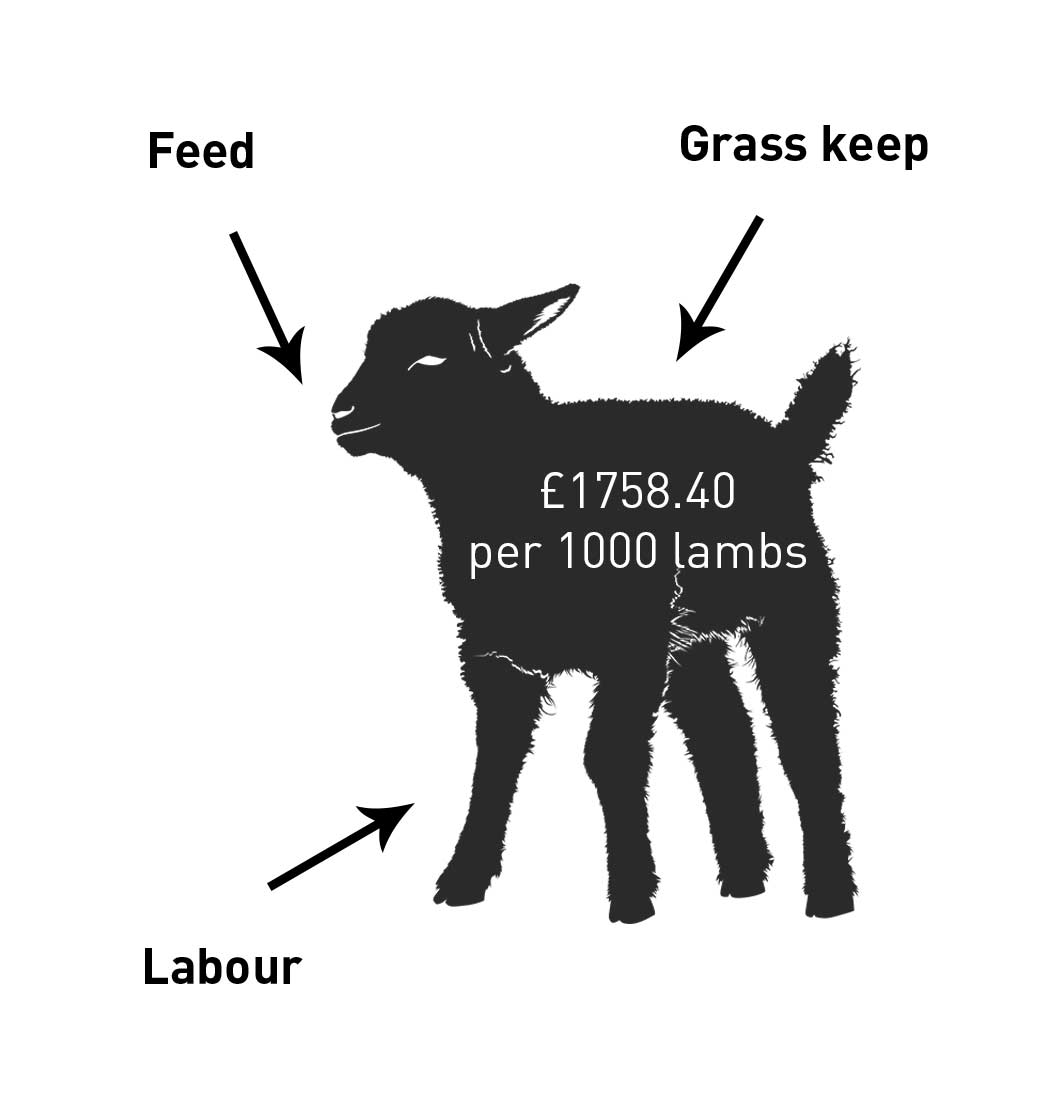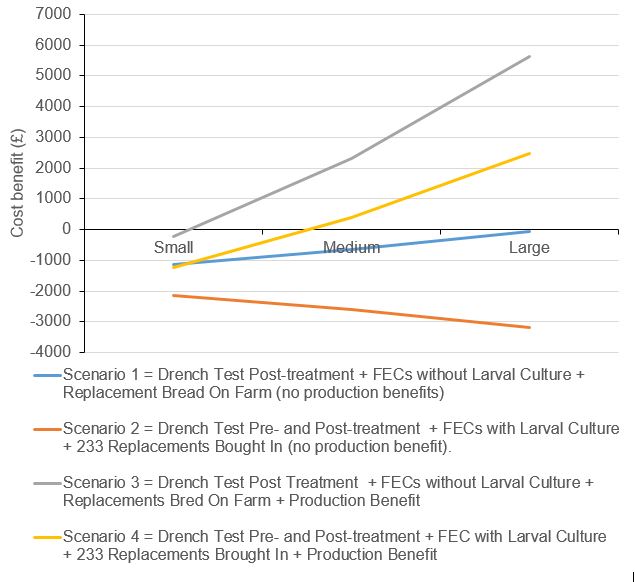Resistance to the older anthelmintic groups is rising 4. In 2013 almost half the south west farms tested as part of the Healthy Livestock project had triple resistance. Interestingly, farmers who suspected they had resistance on farm were most likely have resistance to only one anthelmintic group (78%).
The cost of anthelmintic resistance

Source: Healthy Livestock, 2013
The first case of resistance to Zolvix (Group 4 -AD/ Orange) was reported in the UK last year3.
Cost of parasite control
Preparing a parasite control and grazing plan = £488

| Annual costs based on 1000 ewe flock (72kg) | |
|---|---|
|
Quarantine treatments £559.20 |
Tests for resistance Post-treatment, and pre- and post-treatment drench tests = £50.12 and £100.24 respectively FECRT for three anthelmintic classes = £672.75 Larval development tests for Group 2-LV = £75.51 |
|
Effective administration Additional work required to ensure effective treatment = £54.23 |
Targeted treatment FEC without larval culture= £375.90 |
Source: Learmount et al, 2018
Maintaining in refugia populations using SCOPS
| Anthelmintic costs | |||
|---|---|---|---|
| SCOPS approach | Whole farm | Difference Ewes | |
| Ewes | £47.13 | £224.10 | -£176.97 |
| Lambs | £259.92 | £300.87 | -£40.95 |
Source: Learmount et al, 2018
| Labour costs | |||
|---|---|---|---|
| SCOPS approach | Whole farm | Difference Ewes | |
| Ewes | £150.00 | £640 | -£490 |
| Lambs | £840 | £1180 | -£340 |
Source: Learmount et al, 2018
Production benefits
Lambs receiving effective treatment measured a 10.2% greater mean daily liveweight gain resulting in finishing 13 days earlier than those receiving ineffective treatment 2.
Cost of extra 13 days to finish

Source: Estimated costs from Learmount et al, 2018 based on the findings of Geurden et al, 2014.
Cost benefit

Source: Learmount et al, 2018
The greatest cost benefits were achieved when FEC was carried out without larval culture and when all replacements were bred on farm.
As the number of doses required declines over time without negatively impacting on production, returns could be expected to increase following an initial investment.
References
1Nieuwhof, G.J. and Bishop, S.C., 2005. Costs of the major endemic diseases of sheep in Great Britain and the potential benefits of reduction in disease impact. Animal Science, 81(1), pp.23-29.
2Geurden, T., Hoste, H., Jacquiet, P., Traversa, D., Sotiraki, S., di Regalbono, A.F., Tzanidakis, N., Kostopoulou, D., Gaillac, C., Privat, S. and Giangaspero, A., 2014. Anthelmintic resistance and multidrug resistance in sheep gastro-intestinal nematodes in France, Greece and Italy. Veterinary parasitology, 201(1-2), pp.59-66.
3Hamer, K., Bartley, D., Jennings, A., Morrison, A. and Sargison, N., 2018. Lack of efficacy of monepantel against trichostrongyle nematodes in a UK sheep flock. Veterinary parasitology, 257, pp.48-53.
4Learmount, J., Glover, M.J. and Taylor, M.A., 2018. Resistance delaying strategies on UK sheep farms: A cost benefit analysis. Veterinary parasitology, 254, pp.64-71.Moredun